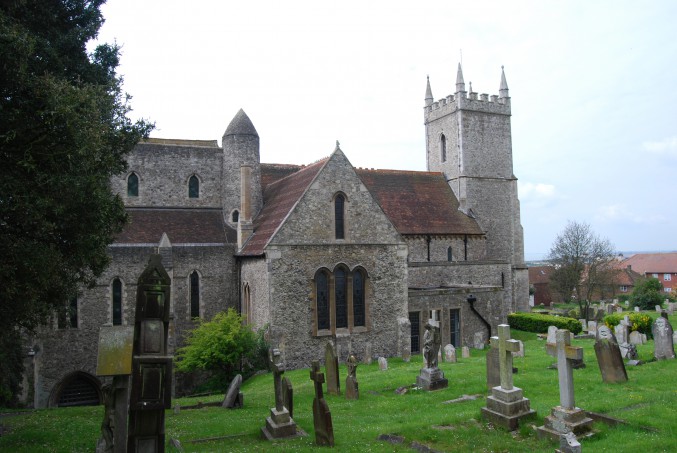A few days ago I met up with Ian Coulson to discuss the final volume in the History of Kent series: Early Medieval Kent, 800–1220. This series, sponsored by Kent County Council, began life a couple of decades ago as a truly innovative project to produce, through Boydell, collections of essays covering the county’s development from prehistory, using Palaeolithic archaeology, to the twentieth century. Ian has been the general editor from the beginning, when he was KCC’s education officer, although since governmental changes and cut-backs he has been pursuing this endeavour freelance and all being well this project will be finished, finally, in 2016. Having become involved very late in the day with first Later Medieval Kent, 1220–1540 and now its earlier companion, I think it is only right and proper to record Ian’s devotion to the project, not least because as well as his many other educational activities, he is also an extremely active president of the Kent Archaeological Society.
Hythe parish church – a gem at one of Kent’s Cinque Ports
To return to Early Medieval Kent, among the contributors are stalwarts such as Dr Gillian Draper, who has contributed two chapters for this volume, having already provided an article on ship building and associated trades to the later medieval essay collection. Other notable scholars include the great, sadly late, Professor Nicholas Brooks, whose 2-volume work on the early Christ Church Priory charters is a fantastic piece of scholarship, and younger historians such as Drs Stuart Brookes and Hilary Powell, who explore respectively Viking Kent and early saints and pilgrimage. Prominent archaeologists within the county are also among the contributors, and it is excellent to record the involvement of Drs Andrew Richardson, Paul Bennett and Jake Weekes. The importance of the Church in this period of Kent’s history is further acknowledged and investigated in the contributions of Mary Berg and Diane Heath, the latter extending her doctoral research on the books of beasts (the Bestiary) at Canterbury’s monasteries to investigate monastic life more broadly either side of the Conquest. Additional contributions are still awaited to fill in some of the gaps and thereafter hopefully the journey to publication will be relatively straightforward and timely so that all involved can, as with Later Medieval Kent, celebrate its arrival through the holding of a conference.
Last time the conference was held in conjunction with the Centre for Medieval and Early Modern Studies at the University of Kent, and this time it will be appropriate to join with the Centre for Research in Kent History and Archaeology at Christ Church. Even though it may not be possible to hold the Early Medieval Kent conference that close to the Medieval History Weekend in Canterbury on 1–3 April 2016, hopefully details will be available by then, and another event that will be putting Canterbury ‘on the map’ will be an exhibition and other events celebrating the 40th anniversary of Canterbury Archaeological Trust. Thus, just like this year, 2016 looks as though it will provide a veritable feast for those interested in the Middle Ages.
 Centre for Kent History and Heritage
Centre for Kent History and Heritage Sheila Sweetinburgh
Sheila Sweetinburgh 713
713


